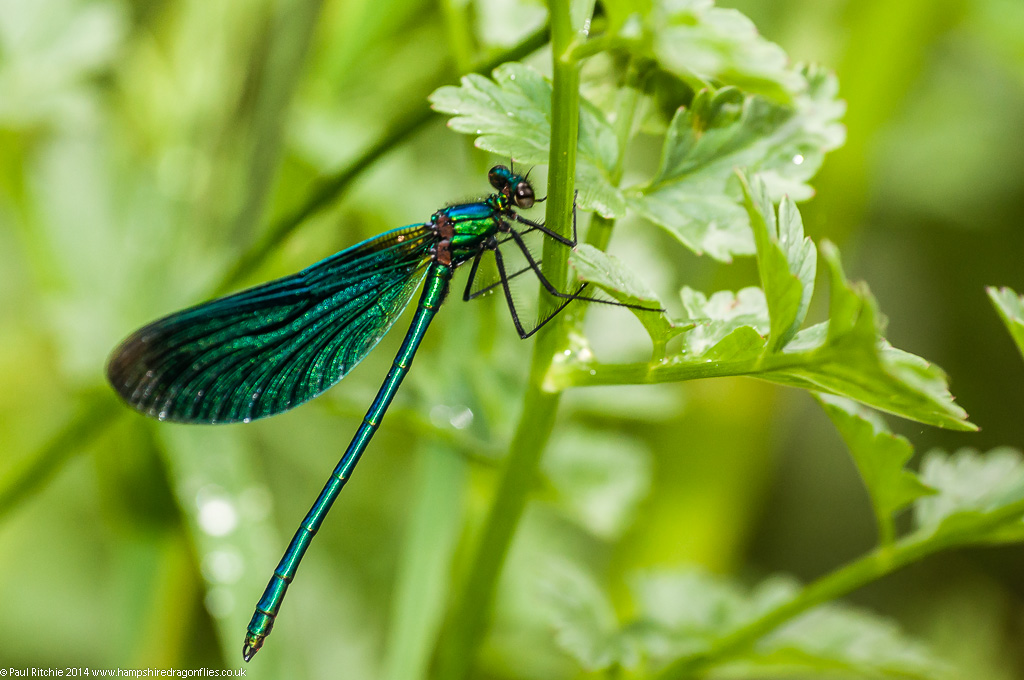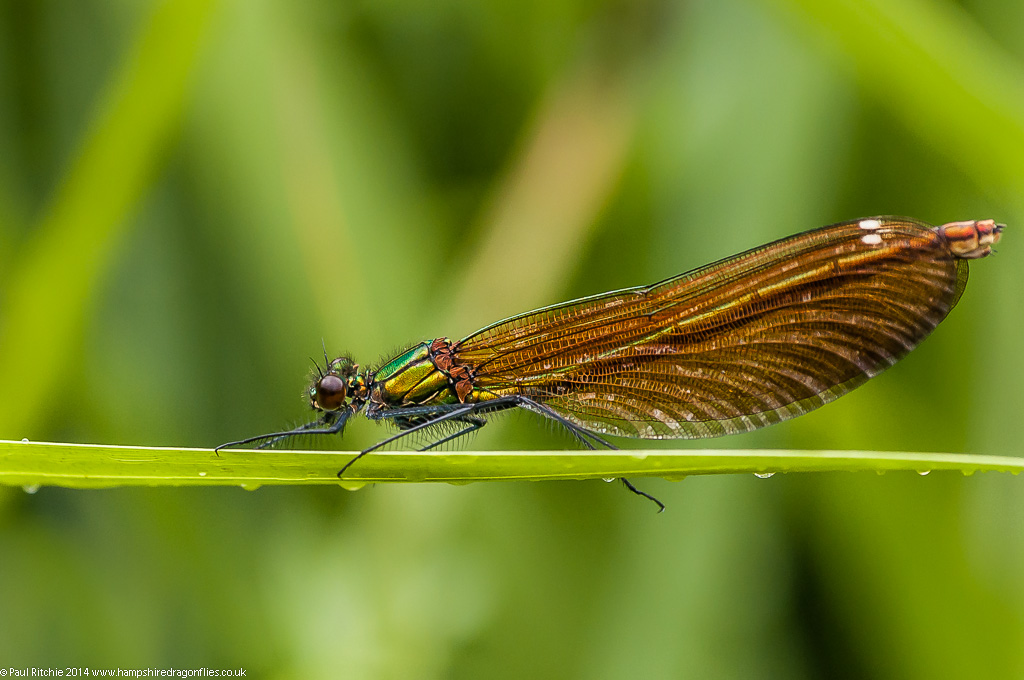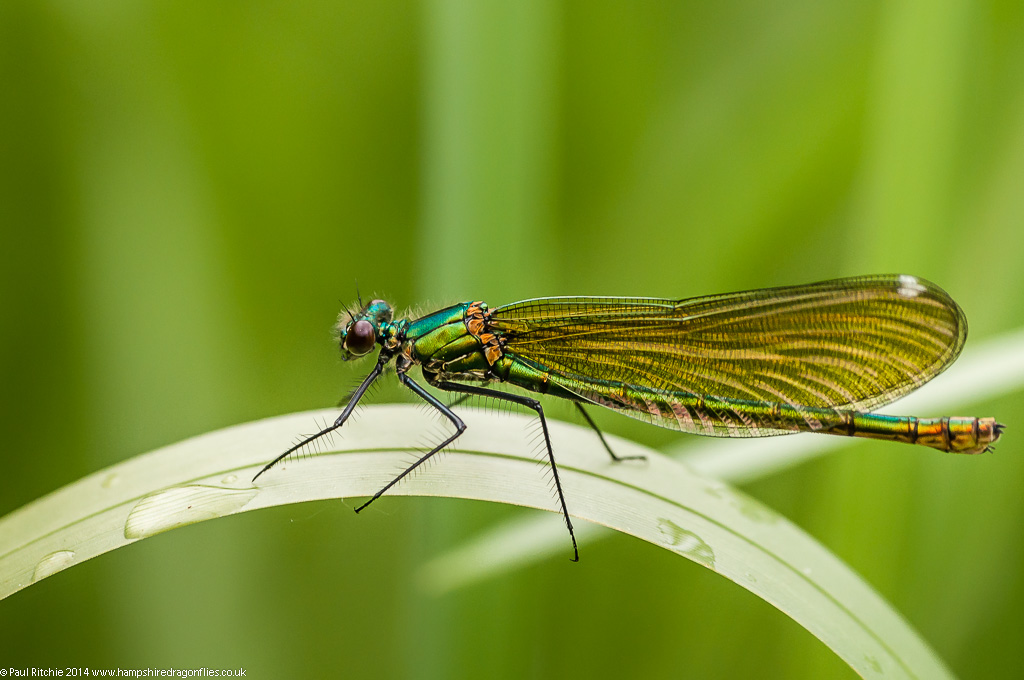In my heart I knew it was probably foolish to venture forth on Wednesday. In my defence the weather looked a little better than it would do Thursday, and I was getting itchy feet and trigger-happy.
I’ve been for a walk along Latchmore Brook in precisely the same conditions before; slightly wetter if I remember. Not that it was raining; more an ultra-fine drizzle to dampen spirits and keep all Odos hidden. Not one did I see. Not even a Beautiful Demoiselle, and that’s going some!
Still, I’m out now and may as well enjoy myself, so I went for a bathe at Troublefield. I only have myself to blame really; I did say I’d like the rain to continue on a regular basis to keep the cattle at bay a little longer.
Now you really have to be committed (perhaps I should be?) to enter three-foot-high and rising soaking wet vegetation with at least six inches of standing water, but I was game if the dragonflies were. Tightening the straps on my wellies to hopefully form a seal didn’t really help as the water headed from my thighs to my socks through capillary action, but once your wet, you’re wet.

I didn’t expect to see anything larger than Demoiselles and I didn’t, so I occupied myself with the few brave Banded and Beautiful who chose to join me.

When both Demoiselles occur in the same habitat it can be difficult to the untrained eye to distinguish between the females. A basic rule of thumb is wing colour – Beautiful = brown and Banded = green, but this can be unreliable in certain lighting conditions.

A more reliable method is to observe the position of the pterostigma (wing spot) – closer to the rear edge in the Banded. Another feature is the venation of the wings. In the Beautiful these are more densely-packed, allowing less light through, as you should be able to see from the above images.
…………………………………………………………
On the way home I called in to see Paul Brock to collect our copy of ‘A comprehensive guide of Insects of the British and Ireland’, the sequel to his marvellous reference ‘Insects of the New Forest’
A few more rainy days will give me time to dig in and learn a little more about those other fascinating creatures I come across, and will stand as a go-to reference in the future.
Naturally it includes a dedicated section on dragonflies, and if you look closely you might find a few photos from yours truly.

At first glance it’s a very worthy tome, and deserves a place on everyone’s bookshelf for being ‘The most complete guide to Insects ever published’. Click on the above image for further details.

Greatly entertaining wordsmithing, illustrated by stunning photography…. As usual!
Wonderfully descriptive tale of your Odo hunting 🙂 and you captured some stunning images (I’m only lucky enough to have banded in my neck of the woods)
A true martyr to the cause!